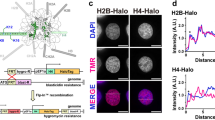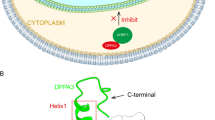Abstract
The effects of histone-like protein H-NS on transcription of promoters of the Quorum Sensing regulated operons from marine luminescent mesophilic bacterium Aliivibrio fischeri and psychrophilic Aliivibrio logei, as well as from pathogenic Pseudomonas aeruginosa, are studied. In the present work, the plasmids carrying DNA fragments with the promoters Pr1f (upstream of the luxICDABEG operon from A. fischeri), Pr1l (upstream of the luxCDABEG operon from A. logei), Pr2l (upstream of luxI gene from A. logei), PluxCf (upstream of luxC gene from A. fischeri), and PlasI (upstream of lasI gene from P. aerugenosa) are used. In these plasmids, promoter-operator regions are transcriptionally fused to the reporter genes cassette luxCDABE from Photorhabdus luminescens. Here we have shown that the transcription of the QS-regulated promoters in E. coli hns::kan cells increases 100 to 1000 times. Furthermore, transcription of the QS-regulated promoters in E. coli hns + cells increases 10 to 100 times in the cells transformed with the plasmid carrying gene ardA ColIb-P9 encoding DNA mimic antirestriction protein ArdA, inhibitor of the type I restriction-modification systems.
Similar content being viewed by others
References
Waters, C. and Bassler, B., Quorum Sensing: cell-tocell communication in bacteria, Annu. Rev. Cell Dev. Biol., 2005, vol. 21, pp. 319–346. doi 10.1146/annurev. cellbio.21.012704.131001
Khmel, I.A. and Metlitskaya, A.Z., Quorum sensing regulation of gene expression: a promising target for drugs against bacterial pathogenicity, Mol. Biol. (Mos-cow), 2006, vol. 40, no. 2, pp. 169–182. doi 10.1134/S0026893306020014
Li, Z. and Nair, S.K., Quorum sensing: how bacteria can coordinate activity and synchronize their response to external signals?, Protein Sci., 2012, vol. 21, pp. 1403–1417. doi 10.1002/pro.2132
Fuqua, W.C., Winans, S.C., and Greenberg, E.P., Quorum sensing in bacteria: the LuxR–LuxI family of cell density–responsive transcriptional regulators, J. Bacteriol., 1994, vol. 176, pp. 269–275.
Fuqua, W.C., Winans, S.C., and Greenberg, E.P., Census and consensus in bacterial ecosystems: the LuxR–LuxI family of quorum sensing transcriptional regulators, Annu. Rev. Microbiol., 1996, vol. 50, pp. 727–751. doi 10.1146/annurev.micro.50.1.727
Meighen, E.A. and Dunlap, P.V., Physiological, biochemical and genetic control of bacterial bioluminescence, Adv. Microb. Physiol., 1993, vol. 34, pp. 1–67.
Ulitzur, S., Matin, A., Fraley, C., and Meighen, E., H-NS protein represses transcription of the lux systems of Vibrio fischeri and other luminous bacteria cloned into Escherichia coli, Curr. Microbiol., 1997, vol. 35, pp. 336–342.
Yamada, H., Yoshida, T., Tanaka, K., et al., Molecular analysis of the Escherichia coli hns gene encoding a DNA-binding protein, which preferentially recognizes curved DNA sequences, Mol. Gen. Genet., 1991, vol. 230, pp. 332–336.
Owen-Hughes, T.A., Pavitt, G.D., Santos, D.S., et al., The chromatin-associated protein H-NS interacts with curved DNA to influence DNA topology and gene expression, Cell, 1992, vol. 71, pp. 255–265. doi 10.1016/0092-8674(92)90354-F
Azam, T.A. and Ishichama, A., Twelve species of the nucleoid-associated protein from Escherichia coli: sequence recognition specificity and DNA binding affinity, J. Biol. Chem., 1999, vol. 274, pp. 33105–33113. doi 10.1074/jbc.274.46.33105
Ueguchi, C. and Mizuno, T., The Escherichia coli nucleoid protein H-NS functions directly as a transcriptional repressor, EMBO J., 1993, vol. 12, pp. 1039–1046. doi 10.1006/jmbi.1996.0566
Atlung, T. and Ingmer, H., H-NS: a modulator of environmentally regulated gene expression, Mol. Microbiol., 1997, vol. 24, pp. 7–17. doi 10.1046/j.1365-2958.1997.3151679.x
Noom, M.C., Navarre, W.W., Oshima, T., et al., H-NS promotes looped domain formation in the bacterial chromosome, Curr. Biol., 2007, vol. 17, pp. R913–R914. doi 10.1016/j.cub.2007.09.005
Bouffartigues, E., Buckle, M., Badaut, C., et al., H-NS cooperative binding to high-affinity sites in a regulatory element results in transcriptional silencing, Nat. Struct. Mol. Biol., 2007, vol. 14, pp. 441–448. doi 10.1038/nsmb1233
Dorman, C.J., H-NS, the genome sentinel, Nat. Rev. Microbiol., 2007, vol. 5, pp. 157–161. doi 10.1038/nrmicro1598
Ali, S.S., Xia, B., Liu, J., and Navarre, W.W., Silencing of foreign DNA in bacteria, Curr. Opin. Microbiol., 2012, vol. 15, pp. 175–161.
Dorman, C.J., H-NS-like nucleotid-associated proteins, mobile genetic elements and horizontal gene transfer in bacteria, Plasmid, 2014, vol. 75, pp. 1–11. doi 10.1016/j.plasmid.2014.06.004
Purtov, Y.A., Glazunova, O.A., Antipov, S.S., et al., Promoter islands as a platform for interaction with nucleoid proteins and transcription factors, J. Bioinf. Comput. Biol., 2014, vol. 12, no. 2. doi 10.1142/S0219720014410066
Zhu, J. and Winans, S.C., The quorum-sensing transcriptional regulator TraR requires its cognate signaling ligand for protein folding, protease resistance, and dimerization, Proc. Natl. Acad. Sci. U.S.A., 2001, vol. 98, pp. 1507–1512. doi 10.1073/pnas.98.4.1507
Manukhov, I.V., Khrul’mova, S.A., Baranova, A., and Zavilgelsky, G.B., Comparative analysis of the lux operons in Aliivibrio logei Kch1 (a Kamchatka isolate) and Aliivibrio salmonicida, J. Bacteriol., 2011, vol. 193, pp. 3998–4001. doi 10.1128/JB.05320-11
Pearson, J.P., Pesei, E.C., and Iglewski, B.H., Role of P. aeruginosa las and rhl quorum-sensing systems in control of elastase and rhamnolipid biosynthesis genes, J. Bacteriol., 1997, vol. 179, pp. 5756–5767.
Smith, R.S. and Iglewski, B.H.P., P. aeruginosa quorum- sensing systems and virulence, Curr. Opin. Microbiol., 2003, vol. 6, pp. 56–60. doi 10.1016/S1369-5274(03)00008-0
Fomenko, D., Veselowskii, A., and Khmel, I.A., Regulation of microcin C51 operon expression: the role of global regulators of transcription, Res. Microbiol., 2001, vol. 152, pp. 469–479. doi 10.1016/S0923- 2508(01)01220-7
van Dyk, T.K. and Rosson, R.A. Photorhabdus luminescens luxCDABE promoter probe vectors, in Methods in Molecular Biology, Larossa, R.A., Ed., Totowa, NJ: Humana, 1998, vol. 102, pp. 85–95. doi 10.1385/0- 89603-520-4:85
Robin, S., Togashi, D., Ryder, A.G., and Wall, J.G., Trigger factor from psychrophilic bacterium Psychrobacter frigidicola is a monomeric chaperone, J. Bacteriol., 2009, vol. 191, pp. 1162–1619. doi 10.1128/JB.01137-08
Mel’kina, O.E., Manukhov, I.V., and Zavilgelsky, G.B., The C-terminal domain of the Vibrio fischeri transcription activator LuxR is not essential for degradation by Lon protease, Mol. Biol. (Moscow), 2010, vol. 44, no. 3, pp. 454–457. doi 10.1134/S0026893-310030143
Manukhov, I.V., Kotova, V.Yu., and Zavilgelsky, G.B., Involvement of host factors in the regulation of the Vibrio fischeri lux operon in Escherichia coli cells, Mikrobiologiya, 2006, vol. 75. pp. 525–531.
Khrulnova, S.A., Baranova, A., Bazhenov, S.V., et al., Lux-operon of the marine psychrophilic bacteria Aliivibrio logei: a comparative analysis of the LuxR1/LuxR2 regulatory activity in Escherichia coli cells, Microbiology, 2016, vol. 162. pp 717–724. doi 10.1099/mic.0.000253
Lindsay, A. and Ahmer, B.M.M., Effect of sdiA on biosensors of N-acylhomoserine-lactones, J. Bacteriol., 2005, vol. 187, pp. 5054–5058. doi 10.1128/JB. 187.14.5054-5058.2005
Zavilgelskii, G.B., Kotova, V.Yu., and Rastorguev, S.M., Antimodification activity of the ArdA and Ocr proteins, Russ. J. Genet., 2011, vol. 47, no. 2, pp. 139–146. doi 10.1134/S1022795410081034
Sambrook, J., Fritsch, E.F., and Maniatis, T., Molecular Cloning: A Laboratory Manual, New York: Cold Spring Harbor Lab., 1989, 2nd ed.
Belogurov, A.A., Yusiffov, T.N., Kotova, V.Yu., and Zavilgelsky, G.B., The novel gene(s) ARD of plasmid pKM101: alleviation of EcoK restriction, Mol. Gen. Genet., 1985, vol. 198, pp. 509–513.
Delver, E.P., Kotova, V.Yu., Zavilgelsky, G.B., and Belogurov, A.A., Nucleotide sequence of the gene (ard) encoding the antirestriction protein of plasmid ColIb-P9, J. Bacteriol., 1991, vol. 173, pp. 5887–5892.
McMahon, S.A., Roberts, G.A., Johnson, K.A., et al., Extensive DNA mimicry by the ArdA anti-restriction protein and its role in the spread of antibiotic resistance, Nucleic Acids Res., 2009, vol. 37, pp. 4887–4897. doi 10.1093/nar/gkp478
Navarre, W.W., Porwollik, S., Wang, Y., et al., Selective silencing of foreign DNA with low GC content by the H-NS protein in Salmonella, Science, 2006, vol. 313, pp. 236–238. doi 10.1126/science.1128794
Gordon, B.R., Li, Y., Cote, A., et al., Structural basis for recognition of AT-rich DNA by unrelated xenogenic silencing proteins, Proc. Natl. Acad. Sci. U.S.A., 2011, vol. 108, pp. 10690–10695. doi 10.1073/pnas. 1102544108
Author information
Authors and Affiliations
Corresponding author
Additional information
Original Russian Text © O.E. Melkina, I.I. Goryanin, G.B. Zavilgelsky, 2017, published in Genetika, 2017, Vol. 53, No. 2, pp. 165–172.
Rights and permissions
About this article
Cite this article
Melkina, O.E., Goryanin, I.I. & Zavilgelsky, G.B. Histone-like protein H-NS as a negative regulator of quorum sensing systems in gram-negative bacteria. Russ J Genet 53, 187–194 (2017). https://doi.org/10.1134/S1022795417020065
Received:
Published:
Issue Date:
DOI: https://doi.org/10.1134/S1022795417020065




